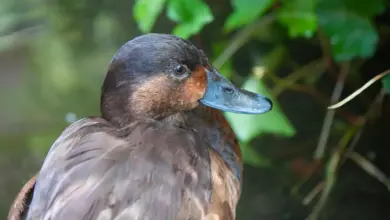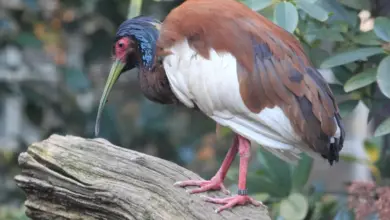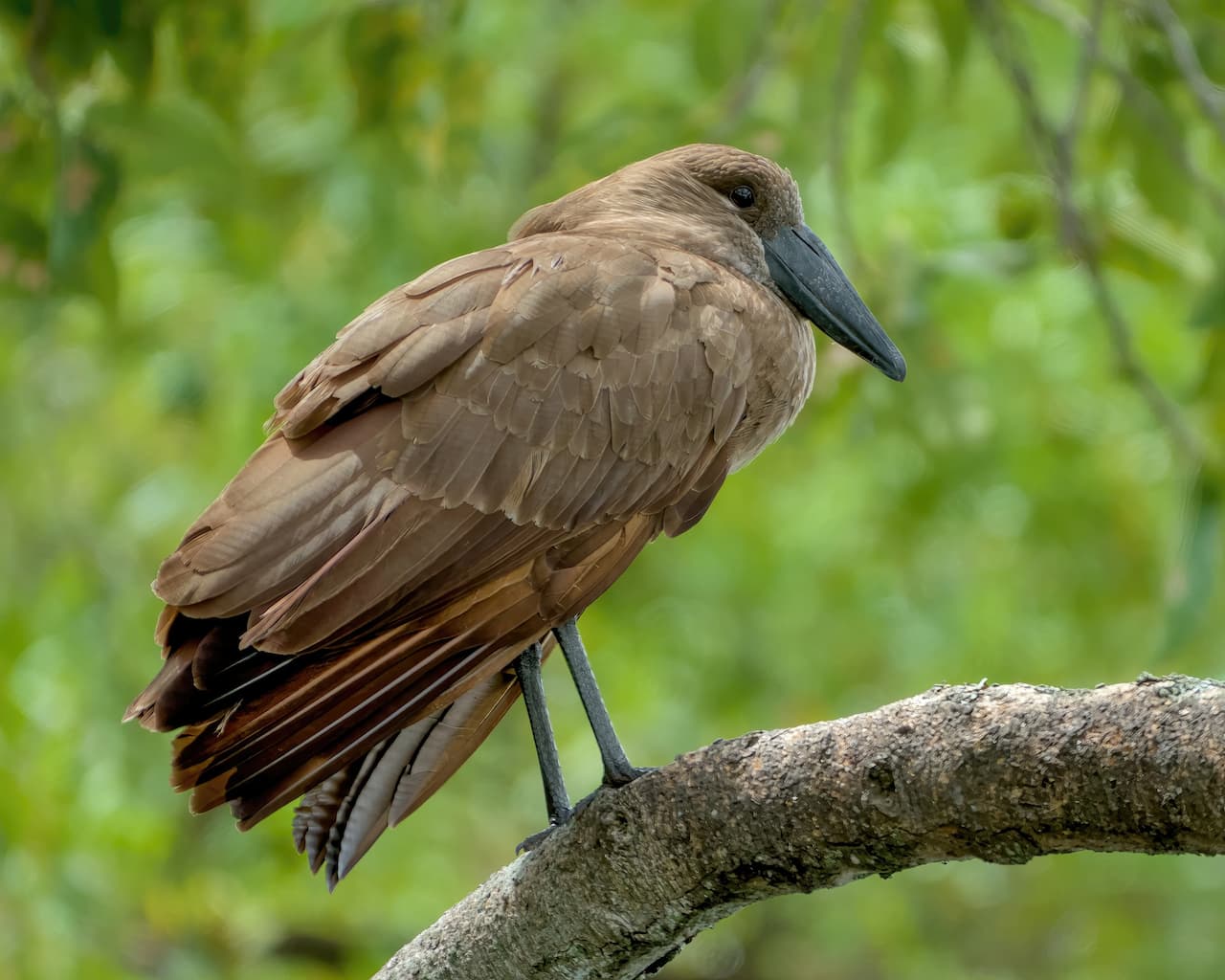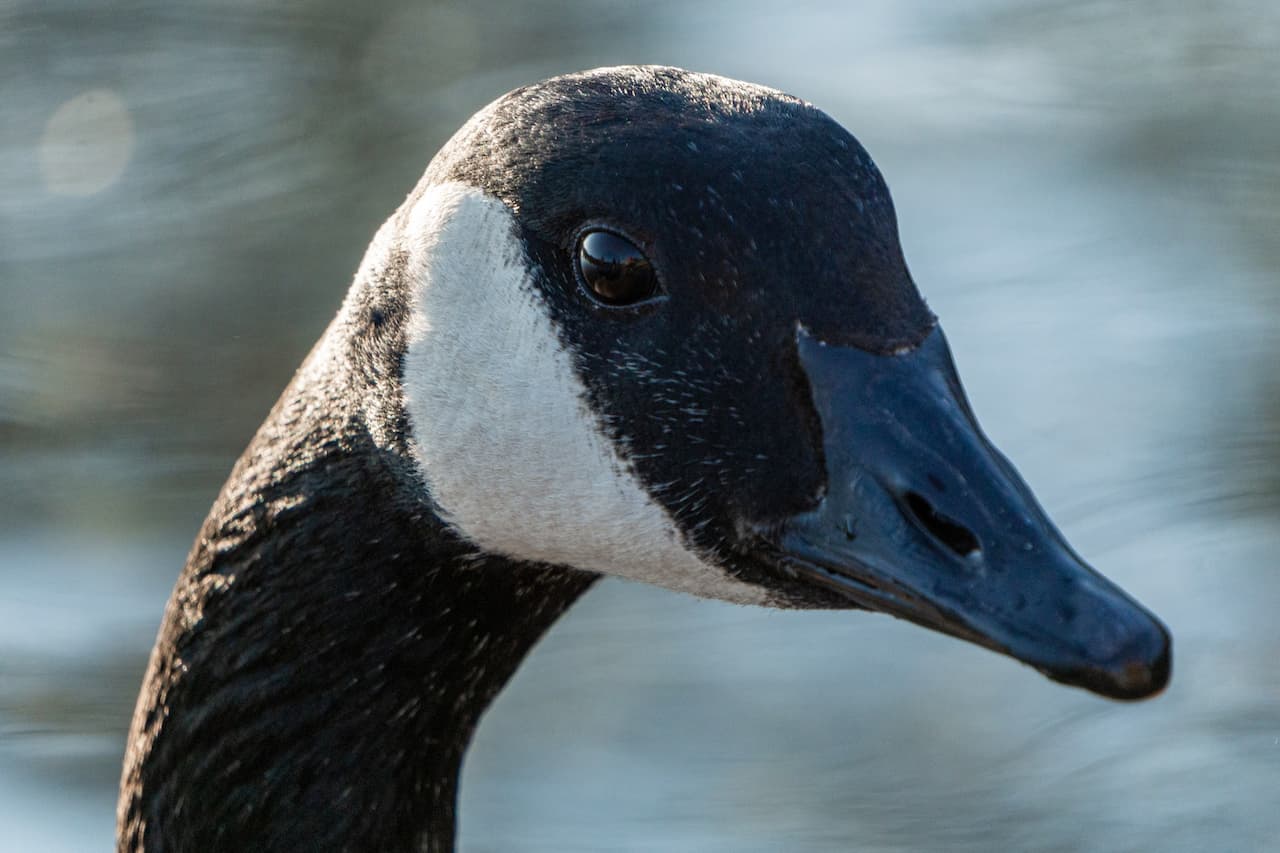The Black Grouse (Tetrao Tetrix) is a large bird in the grouse family. It is closely related to the Caucasian Black Grouse.
The male and female are sometimes referred to by their folk names, Blackcock and Greyhen respectively.
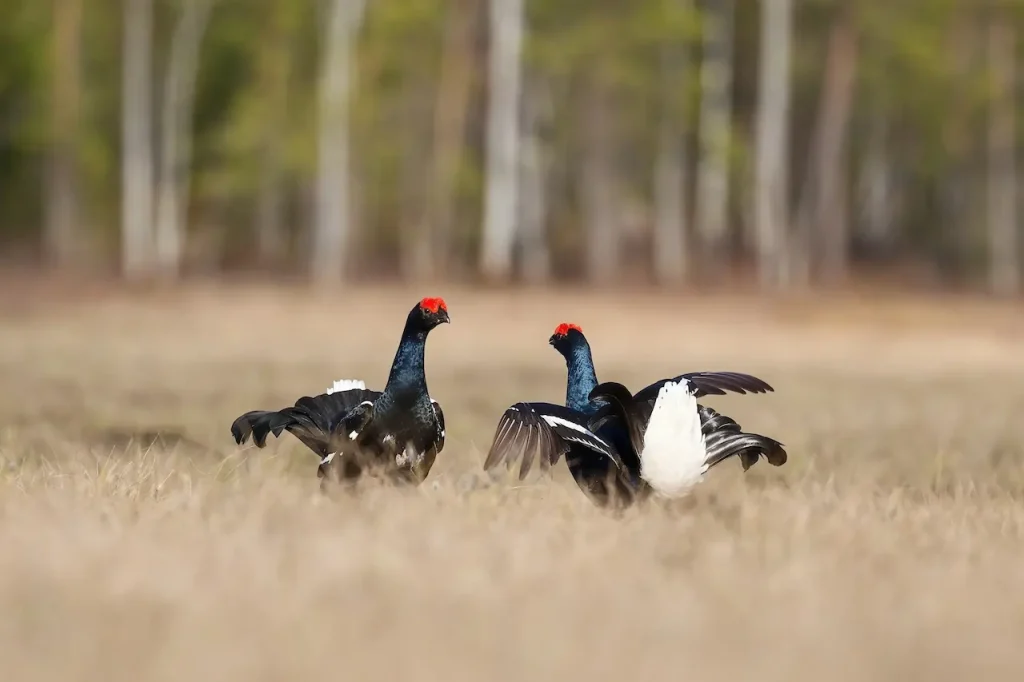
Distribution / Range
Black Grouse can be found across Europe (Swiss-Italian-French Alps especially) from Great Britain (but not Ireland) through Scandinavia and Estonia into Russia. In Eastern Europe, they can be found in Hungary, Latvia, Lithuania, and Poland.
There is a population in The Alps, and isolated remnants in Germany, France, and Holland.
It formerly occurred in Denmark, but the Danish Ornithological Society (DOF) has considered it extinct since 2001.
Description
As with many Gamebirds, the male is larger than the female at 49-55 cm compared to her 40-45 cm length. The cock is very distinctive, with black plumage, apart from red wattles and a white wing bar, and a lyre-shaped tail, which appears forked in flight. His song is loud, bubbling, and somewhat dove-like.
The female is greyish-brown and has a cackling call. She takes all responsibility for nesting and caring for the chicks, as is typical with gamebirds.
Reproduction
It is a sedentary species, breeding across northern Eurasia in moorland and bogs with some trees.
Black grouse have a very distinctive and well-recorded courtship ritual or game. At dawn in the spring, the males strut around in a traditional area and display whilst making a highly distinctive mating call. This process is called a Lek – the grouse are said to be leaking
Conservation
This species is declining in western Europe due to loss of habitat, disturbance, predation by foxes, crows, etc., and small populations gradually dying out.
They have declined in the UK (especially England), having disappeared from many of their former haunts. They are now extinct in Lancashire, Derbyshire, Exmoor, East Yorkshire, New Forest, Nottinghamshire, Worcestershire, Quantock Hills, Cornwall, Dartmoor, Kent, Wiltshire, and Surrey.
A program to re-introduce Black Grouse into the wild started in 2003 in the Upper Derwent Valley area of the Peak District in England. 30 grouse were released in October 2003, followed by 10 male grouse in December 2004 and a further 10 male and 10 female in April 2005. The program is being run jointly by the National Trust, Severn Trent Water, and Peak District National Park.
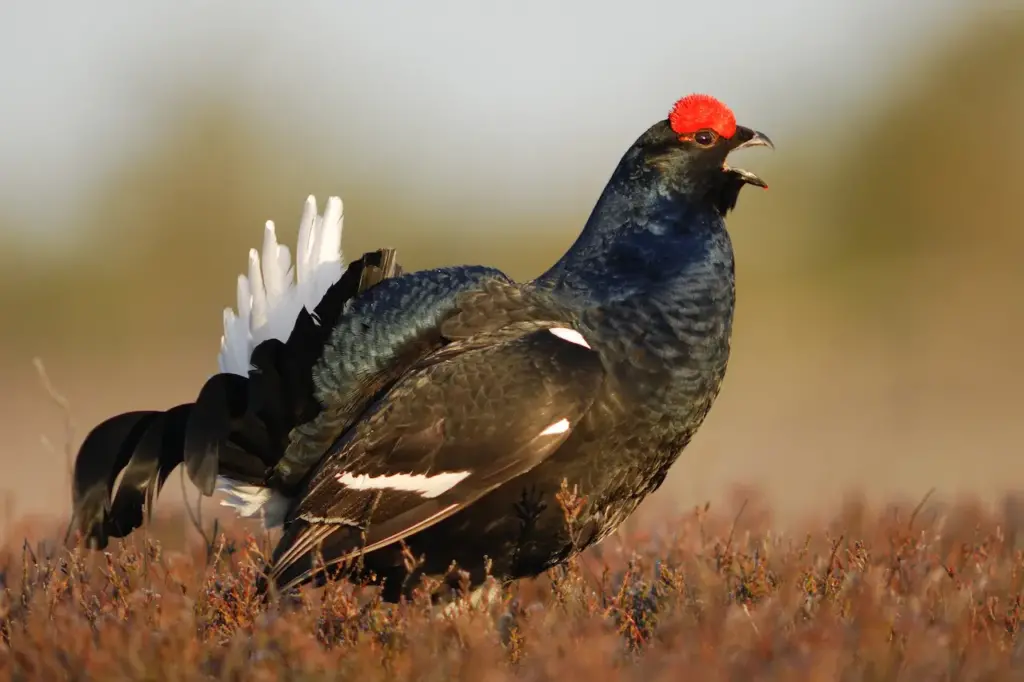
Conservation groups helping to revive the Black Grouse include the RSPB and the Game and Wildlife Conservation Trust.
Meanwhile, it should be noted that the tails of black-cocks have, since late Victorian times, been popular adornments for hats worn with Highland Dress. Most commonly associated with Glengarry and Balmoral or Tam O’Shanter caps, they continue to be worn by pipers of civilian and military pipe-bands. Since 1904, all ranks of the Royal Scots and King’s Scottish Borderers have worn them in their full-dress headgear and that tradition is carried on in the dress Glengarries of the current Scottish super regiment, The Royal Regiment of Scotland.

